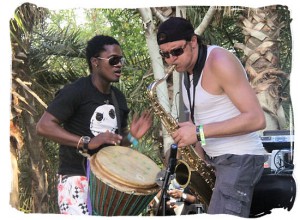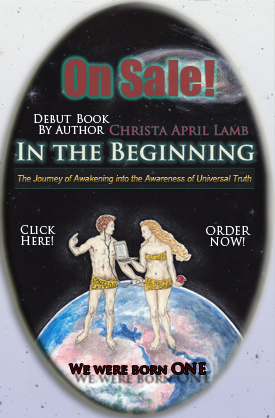Music from South Africa

With its “rainbow” fusion of South Africa music and European and Asian music cultures, South Africa is a hotbed of musical originality and creativity.
About: Since early colonial times, Music from South Africa has evolved out of the blending of local ideas and forms with those imported from elsewhere, giving it the unmistakable flavour of the country. In the Dutch colonial era, from the 17th century on, indigenous South African people and slaves imported from the east adapted Western musical instruments and ideas.
The Khoi-Khoi, for instance, developed the Ramkie, a guitar with three or four strings, and used it to blend Khoi and Western folk songs. They also used the Mamokhorong, an indigenous single-string violin, in their own music-making and in the dances of the colonial centre, Cape Town.
Western music was played by slave orchestras and travelling musicians of mixed descent, moving around the colony, entertaining at dances and other functions, a tradition that continued into the era of British domination after 1806.
Coloured bands of musicians began parading through the streets of Cape Town in the early 1820s, a tradition that was given added impetus by the travelling minstrel shows of the 1880s and has continued to the present day with the Minstrel Carnival held in Cape Town every New Year. 1
Similarities to other music styles: Cape jazz is a genre of jazz, similar to the popular music style known as marabi, though more improvisational in character, which is performed in the southern part of Africa. Jazz in the 1960s split into two fields. 2.
Influences: The South African music scene includes both popular (jive) and folk forms. Pop styles are based on four major sources, Zulu isicathamiya singing and harmonic mbaqanga. South Africa is very diverse, with many native African Ethnic groups as well as European and Indian peoples.3
DISCOVER MORE
Article from Afropop Worldwide by Banning Eyre
At the close of the 15th century, Portuguese explorers first landed on the southern tip of Africa. By then, San hunter gatherers and Bantu speaking peoples migrating from the south were spreading through the fertile grasslands. Aside from the natural beauty of the land, its rich and varied wildlife and agreeable climate, the earth itself contained vast wealth in the form of diamonds, gold, copper, and other mineral resources. For all of these reasons, the Dutch and English who went on to inhabit what is now South Africa would not be content to set up colonial regimes and then cede power back to Africans when the challenges of colonialism became too much to bear in the mid-20th century. Rather, the European “settlers” had come to stay, and subjugation of the local African populations was part of the bargain.
The tenacity of white rule in South Africa is unparalleled on the continent. It took a great deal of violence and international pressure to bring an end to this era and its ugly final chapter, apartheid. Nevertheless, in 1994, Nelson Mandela was elected the nation’s first black president, and South Africa joined the continent’s other nations in facing the challenges of self-rule in a post-colonial world.
South African Music
In the musical arena, South Africa has given us some of the most memorable voices from the African continent-the soaring, passionate alto of Miriam Makeba, the purr and pounce of Ladysmith Black Mambazo, the amazing sub-bass groaning of Mahlathini, and many others. Such vocal virtuosity is not surprising coming from a land where Zulus, Xhosas and Sothos have for centuries celebrated life’s large and small moments with song. Many South African artists started out singing in mission school choirs or in church, and when they made the jump to the commercial music world, a sophisticated recording industry awaited them.
South Africa has the most developed recording history on the continent with a prolific local music industry that’s been pumping out commercial releases for over a half century. The first commercial recordings were made in South Africa in 1912, and S.A. music industry pioneer Eric Gallo established the first recording studio in the country in the 1930s. The major South African record companies today are Gallo, Teal, Tusk, CCP/EMI and BMG.
For over a century, South Africa, more than any other African country, has looked to the United States for musical inspiration. The discovery of gold and diamonds in the 19th century created an urban population hungry for entertainment. And traveling African-American minstrel shows, vaudeville acts and gospel groups helped fill the bill, making a big impression on local audiences. American jazz artists and jazz arrangement concepts energized the embryonic South African jazz scene from the ’30s on. American soul, disco and hip-hop from the ’60s to the present all have their offspring in South Africa.
The 1976 student uprising in Soweto was a turning point; the young generation shunned their parents’ choices including music and embraced what they thought was the more progressive forms of music, principally soul and disco. The Afropop Worldwide website contains the stories of the leading South African recording artists and the varied styles they defined-South African jazz, kwela, mbaqanga, mbube, soul, disco, and reggae. Here, we provide a look at some of the neo-traditional styles that persist despite being out of fashion. This is the music that attracted Paul Simon to South Africa before he created Graceland, and it remains some of the most distinctive and rewarding music in the region.
Neo-Traditional Pop
Far from the studios and shebeens of South Africa’s urban centers, rural musicians in Zulu, Sotho, Pedi and Shangaan ethnic enclaves create lively social music. Traditionally strong singers and dancers, the Zulu took a particular shine to two western instruments, guitar and ten-button concertina. The first Zulu concertina records appeared in the ’30s, coupling mesmerizing melodic cycles with call-and-response singing. The Zulu’s distinctive finger style guitar playing, known as ukupika, adapts melodies from various traditional sources, including the ancient mouth bow, to create racing flourishes of notes that settle into insistent, hypnotic grooves, grounded by a heavy downbeat. The typical song arrangement begins and ends with choral singing; in the middle, the singer delivers ukubonga, spitfire rapping generally in praise of a clan, family or chief. John Bhengu fathered this style in Durban in the ’50s and also pioneered the electric version of the music that had great success in rural South Africa during the ’70s when artists like Moses Mchunu, Sipho Mchunu, and Kati Elimnyama produced hundreds of records.
Among the subsequent Zulu traditional pop, or maskanda, artists to emerge is Bheki Ngobo, who sings, dances and plays guitar using the stage name Ihashi Elimhlope (White Horse). Ngobo’s music typifies the updated traditional pop sound, lacking the roughness that gave the old groups a measure of their charm, but still packing a hefty punch. After a long lull, the concertina has seen a comeback in recent Zulu pop. Concertina player and singer Vusi Ximba found success acting out comic skits with his female dancers in the ’70s, and he still records. Vusi’s musical comedy release Siyakudumisa sold over 100,000 copies in 1993.
In the late ’90s, Phuzekhemisi was one of the top-selling maskanda acts. With a strong, roots sound and socially engaged messages in his songs, Phuzekhemisi has been this genre’s greatest international ambassador in recent years as well. Meanwhile, veteran singer Busi Mhlongo has fused the Zulu traditional sound with contemporary dance aesthetics, hip-hop and kwaito. Her 1999 release Urban Zulu is a landmark in the new South African roots pop movement.
The Pedi, an ethnic group closely related to the Sotho, also record using an autoharp in the style called harepa. With a beat at least as pounding as the Zulus’, Sotho electric groups have evolved from concertina to full-sized accordion and typically favor a gravelly, roaring lead vocal. Sotho groups, such as Tau Oa Matsheka and Tau Ea Linare, use a six-note scale, rather than western seven-note modes. As an indication of the itinerant nature of these artists, one Sotho singer, Molahlehi, “The Lost One,” recorded a popular record in 1986, then disappeared. Two years later, the finished record hit the market, but Molahlehi never turned up to claim his glory.
Shangaan groups come from the Northern Transkei region that borders Mozambique, once a Portuguese colony. That proximity led to a Latin flavor in Shangaan music in the ’50s, the heyday of singer Francisco Baloyi. After 1975 though, the Mozambiquan influence faded when Bantu Radio started an all-Shangaan station. The guitar-based Shangaan sound veers towards rowdy party music, and a faster, lighter groove than the Zulus use. Shangaan groups typically feature a male leader backed by a female chorus, as in the top-ranking Thomas Chauke and the Sinyori Sisters, as well as General MD Shirinda and the Gaza Sisters, and Obed Ngobeni and the Kurhula Sisters, whose song “Kazet No. 2″ became a megahit when Mahlathini and the Mahotella Queens covered it in 1987. 4.
VIDEOS
CAPE TOWN JAZZ ORCHESTRA
Music and apartheid in South Africa
South Africa’s Pondoland Music
South African Music
Source:
1.South African Music, South African Tours & Travel: http://www.south-africa-tours-and-travel.com/south-african-music.html
2.http://specialstar.net/south-african-music-genres.php
3.Music of South Africa, Wikipedia. http://en.wikipedia.org/wiki/Music_of_South_Africa
4.http://www.afropop.org/explore/country_info/ID/8/South%20Africa/









